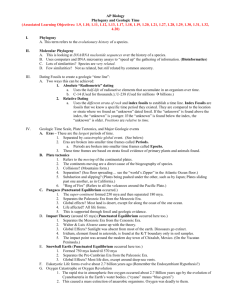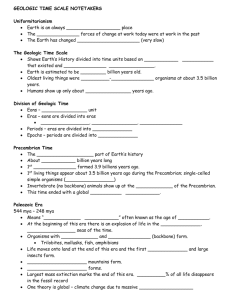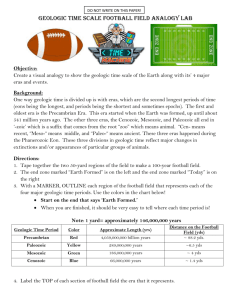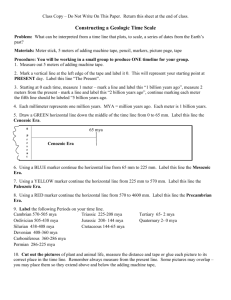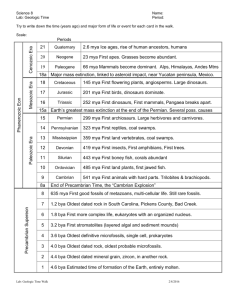Day 8 Geologic Time and Folded Mountains
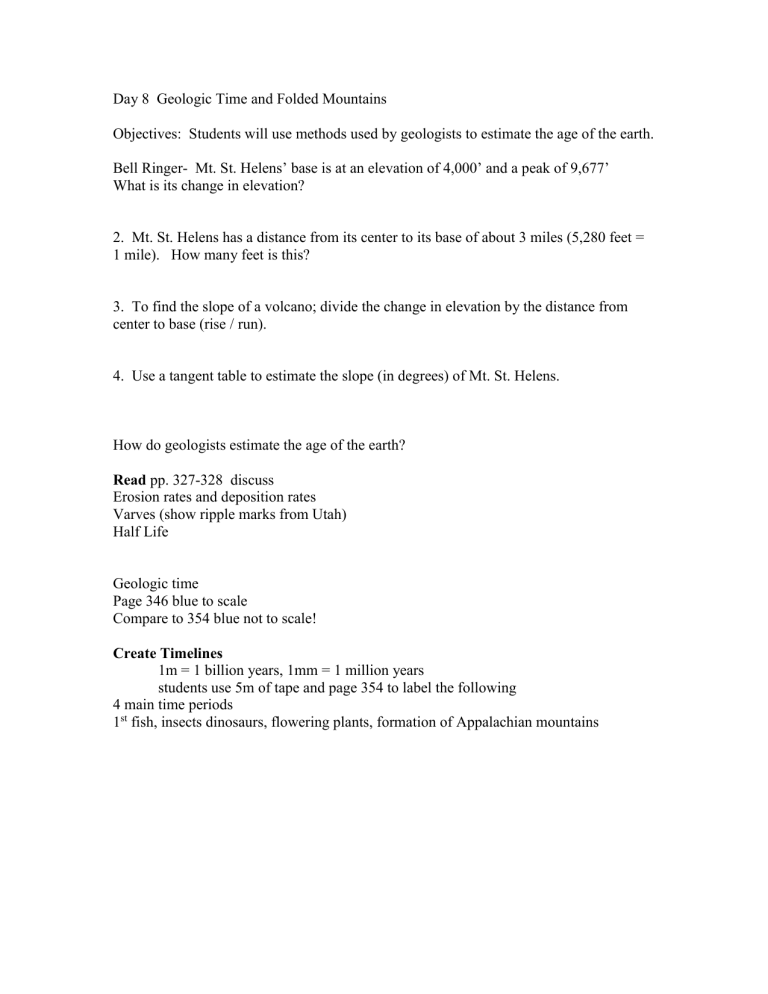
Day 8 Geologic Time and Folded Mountains
Objectives: Students will use methods used by geologists to estimate the age of the earth.
Bell Ringer- Mt. St. Helens’ base is at an elevation of 4,000’ and a peak of 9,677’
What is its change in elevation?
2. Mt. St. Helens has a distance from its center to its base of about 3 miles (5,280 feet =
1 mile). How many feet is this?
3. To find the slope of a volcano; divide the change in elevation by the distance from center to base (rise / run).
4. Use a tangent table to estimate the slope (in degrees) of Mt. St. Helens.
How do geologists estimate the age of the earth?
Read pp. 327-328 discuss
Erosion rates and deposition rates
Varves (show ripple marks from Utah)
Half Life
Geologic time
Page 346 blue to scale
Compare to 354 blue not to scale!
Create Timelines
1m = 1 billion years, 1mm = 1 million years students use 5m of tape and page 354 to label the following
4 main time periods
1 st
fish, insects dinosaurs, flowering plants, formation of Appalachian mountains
The 3 eras:
Cenozoic Era
(65 mya to today)
Mesozoic Era
(248 to 65 mya)
Paleozoic Era
(543 to 248 mya)
Precambrian Time (not an era but rather all time before the 3 eras)
(4,500 to 543 mya)
Folded Mountains activity
Demo folding using towel.
Syncline and anticline
Syncline- downward fold of land causing rock layers to bend down
Anticline- folded upward. Rock bends up.
Put up PA relief map
Students complete lab
Exit Bell Ringer- according to geologists, how old is the Earth?
Answer:
4.6 billion years

